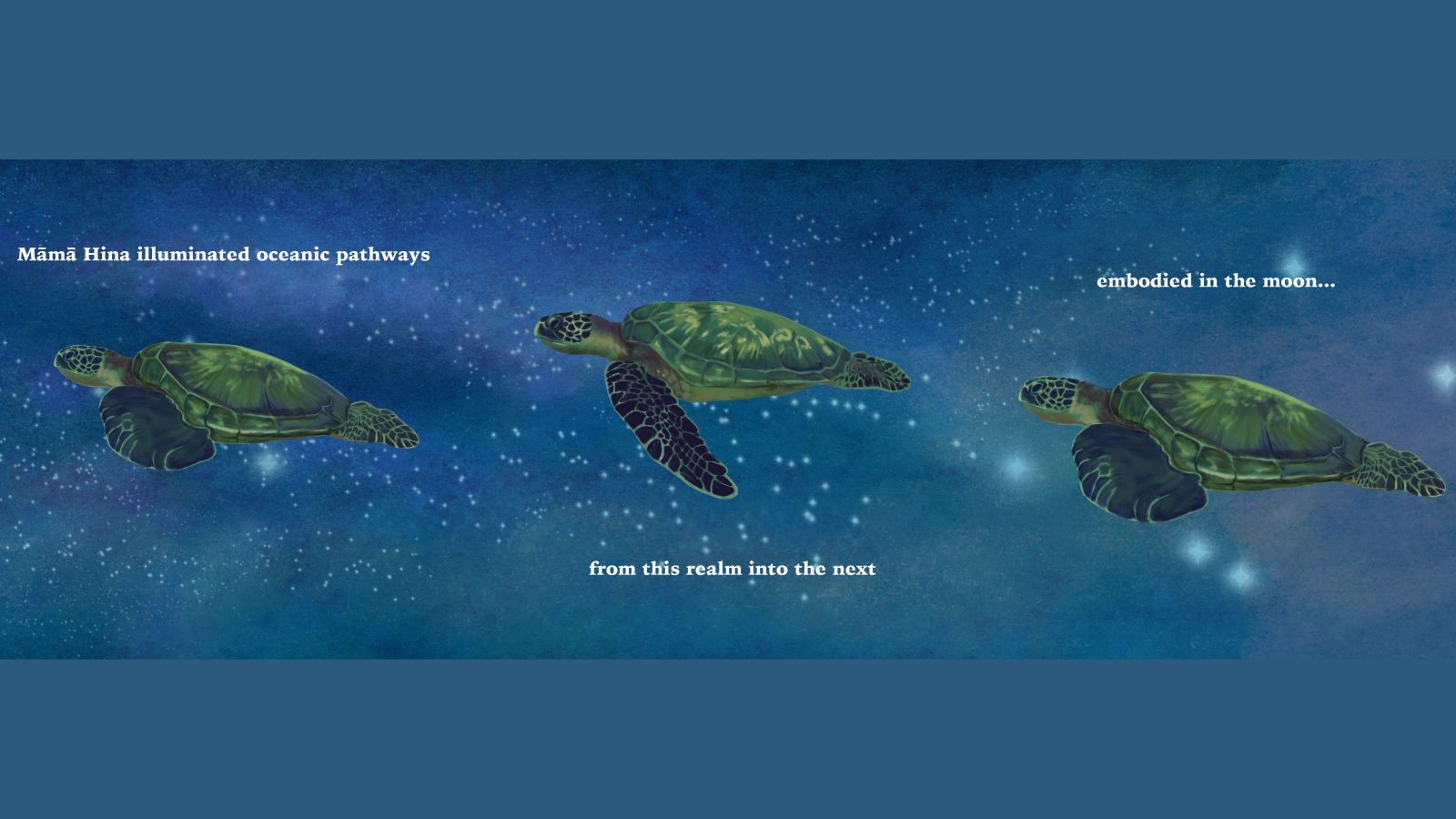
Vā Hina screened over three weekends leading up to Matariki as part of the annual Mana Moana festival at Wellington’s Whairepo Lagoon. Mana Moana is renowned for films projected onto a water screen directly above the lagoon.
Curated by Israel Randell (Rarotonga, Tainui, Ngāti Kahungunu), this year’s Mana Moana film collection was guided by the words of the late Moana Jackson: “In time, like te ao mārama emerging out of te pō, mourning gives way to dreaming.”
Vā Hina tells a story of Hina, an ancestor embodied in the moon and a revered Pacific voyager.
Through fluid animation and layered soundscapes, the film explores Hina’s journey as both personal and collective, echoing the experiences of Pacific peoples across time and tide .
“The story is based on 25 years of research and experience,” Nālani says. “It is Hōkūleʻa’s 50th birthday, and when I was 25, I voyaged on the canoe through the Marquesas Islands to Rapa Nui and through the Tuamotus to Tahiti Nui.
The canoe Hōkūle‘a was the first rebuilt waʻa kaulua (double hulled voyaging canoe) which ignited the voyaging revival throughout Oceania, and the film honours its 50-year anniversary.
“The story and poetry in the film is partly based on lived experiences as a Pacific woman voyager. There is a line in the film where I say, ‘Yes! The moon was full that night, you came to us alongside Māmā Hōkūleʻa’ This really happened.
“After returning from the voyage, I moved to the island of my grandmother and father’s genealogical lineage, to Molokai Nui a Hina.”
While Nālani was doing a Master’s degree in Pacific Islands Studies, she found evidence of Hina as a voyager, who is also acknowledged as the mother of the island of Molokai.
“It was exciting to learn that I came from a long lineage of voyagers, including Hina,” she says. “I also later learned that my grandfather’s lineage to Kalapana, Hawai’i is to Kanaka‘aukai, The Voyaging People. So, we have voyaging on both sides from my father’s mother and father.”
Nālani’s recent research has been through a 2025 Marsden Fast-Start, and focuses on “retracing the storylines of Pacific women voyagers and navigators,” which has resulted in voyages on canoes in Tahiti and Hawaii, and interviews with contemporary women voyagers and navigators.
Vā Hina is based on Nālani’s research and was funded by the Vā Hina Mobilisation grant from the University. The grant aims to bring research into public spaces to reach a wider audience.
Join Nālani and others at 1 pm on 17 July 2025 in the Hunter Council Chambers for a public showing of Vā Hina and a discussion via zoom and in person between artists, scholars, and activists across the Moana discussing Indigenous cross-cultural knowledge.
